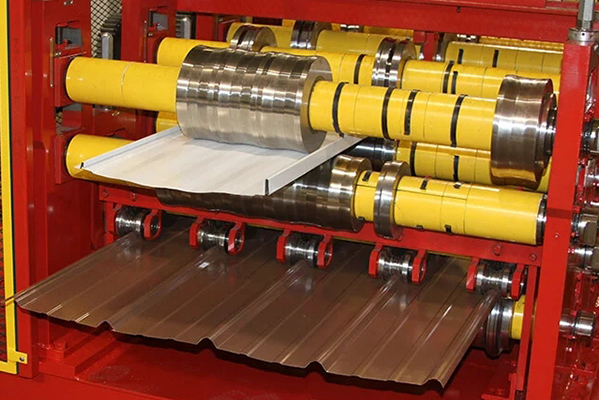Navigation Menu
Contact Us
- Email:
- info@wxavatar.com
- Address:
- Yurong Village, Yuqi Street, Huishan District, Wuxi, China.
Release Date:May 06, 2025 Visit:48 Source:Roll Forming Machine Factory
When it comes to shaping metal, manufacturers have relied on various methods for decades. Traditional techniques like stamping, bending, and welding have been the go-to for many years, but modern roll forming has become a popular alternative. So how do these approaches compare? Let’s break it down in simple terms.

1. Production Speed & Efficiency
Traditional fabrication often involves multiple steps—cutting, bending, welding—which can slow things down. Each stage requires separate machines and setups, leading to longer production times.
Roll forming, on the other hand, is a continuous process. Metal coils are fed through a series of rollers that gradually shape the material in one smooth motion. This means fewer interruptions and faster output, especially for long, uniform parts like roofing panels or metal frames.
Bottom Line: Roll forming is usually quicker for large runs, while traditional methods may still be better for small, complex parts.
2. Precision & Consistency
Handling metal with presses, brakes, or welding can sometimes lead to slight variations in each piece. Even skilled workers might face minor inconsistencies due to manual adjustments.
Modern roll forming machines, however, use computer-controlled systems to ensure each section is shaped exactly the same way. This reduces errors and waste, making it ideal for products where tight tolerances matter.
Bottom Line: Roll forming offers more consistency for high-volume production, while traditional methods allow for more hands-on adjustments when needed.
3. Material & Design Flexibility
Traditional fabrication methods are versatile—they can handle odd shapes, thick metals, and one-off custom parts. Need a unique bracket or a small batch of specialty components? A skilled fabricator can make it happen.
Roll forming, while efficient, works best with long, uniform profiles. Newer machines are becoming more adaptable, but they still have limits when it comes to highly complex or variable designs.
Bottom Line: Traditional methods win for custom or irregular shapes, while roll forming excels at standardized, repetitive parts.
4. Cost Considerations
Setting up a roll forming line can be a bigger initial investment than buying a press brake or welding machine. However, once running, roll forming is cost-effective for large orders because it reduces labor and material waste.
Traditional fabrication, while more affordable to start, can get expensive for mass production due to slower speeds and higher labor costs.
Bottom Line: Roll forming saves money over time for big batches, while traditional methods may be more economical for smaller jobs.
5. Maintenance & Longevity
Older fabrication tools, like mechanical presses or manual brakes, are robust but require regular upkeep. Welding equipment, for example, needs consumables like electrodes and shielding gas.
Modern roll forming machines are built to run for long periods with minimal intervention. Many now come with self-monitoring features that alert operators before issues arise, reducing unexpected downtime.
Bottom Line: Roll forming machines tend to need less hands-on maintenance, while traditional tools may require more frequent attention.

Which One Should You Choose?
There’s no one-size-fits-all answer—it depends on your needs:
Need high volume, fast production with consistent results? Roll forming is likely the better pick.
Working with custom designs, thick materials, or small batches? Traditional fabrication might be the way to go.
Many manufacturers actually use both, depending on the job. The key is understanding the strengths of each method and applying them where they make the most sense.
Have questions about which approach works best for your project? Feel free to ask—we’re happy to help!